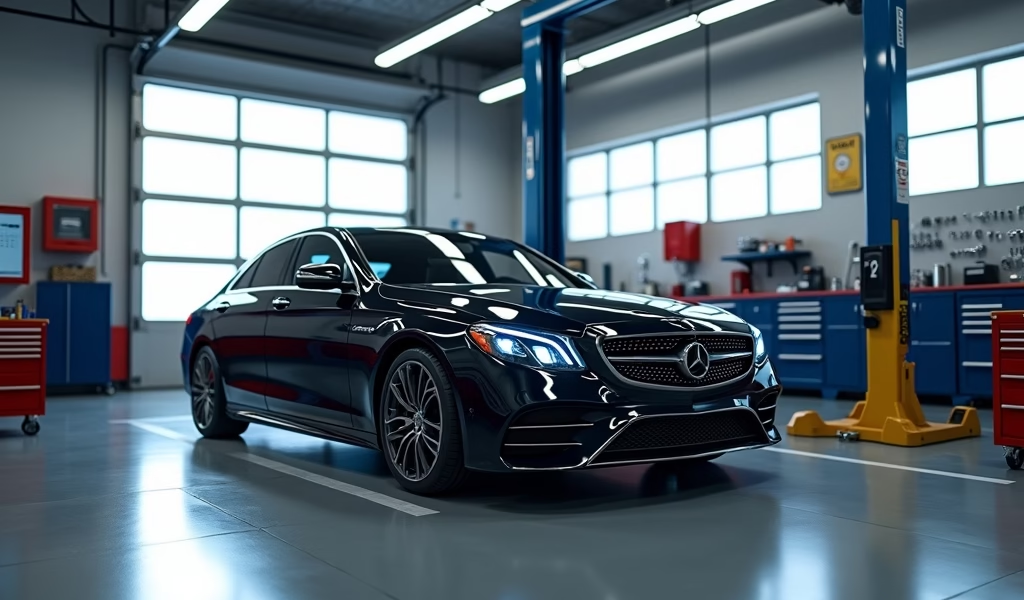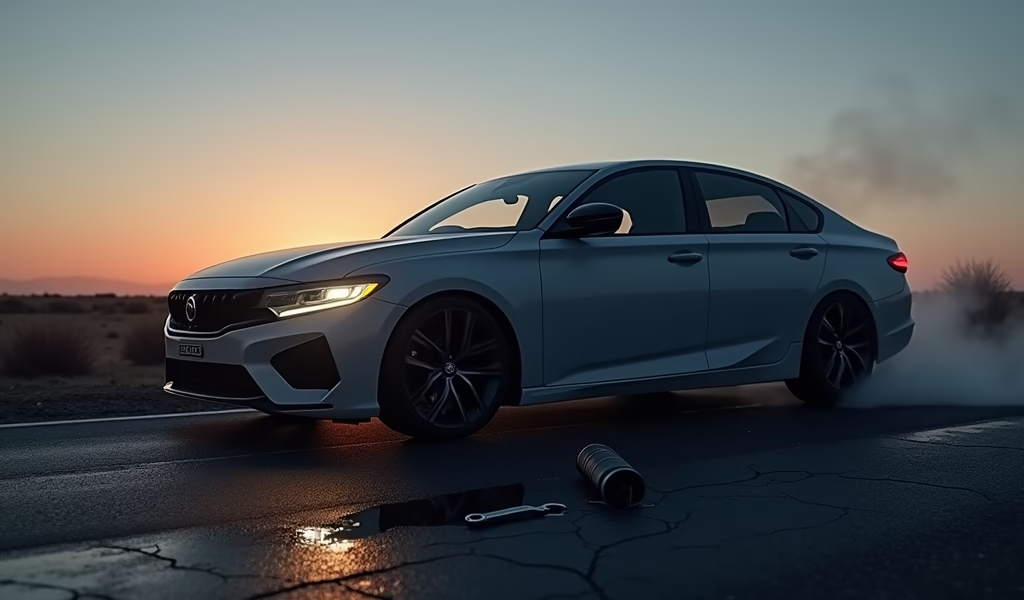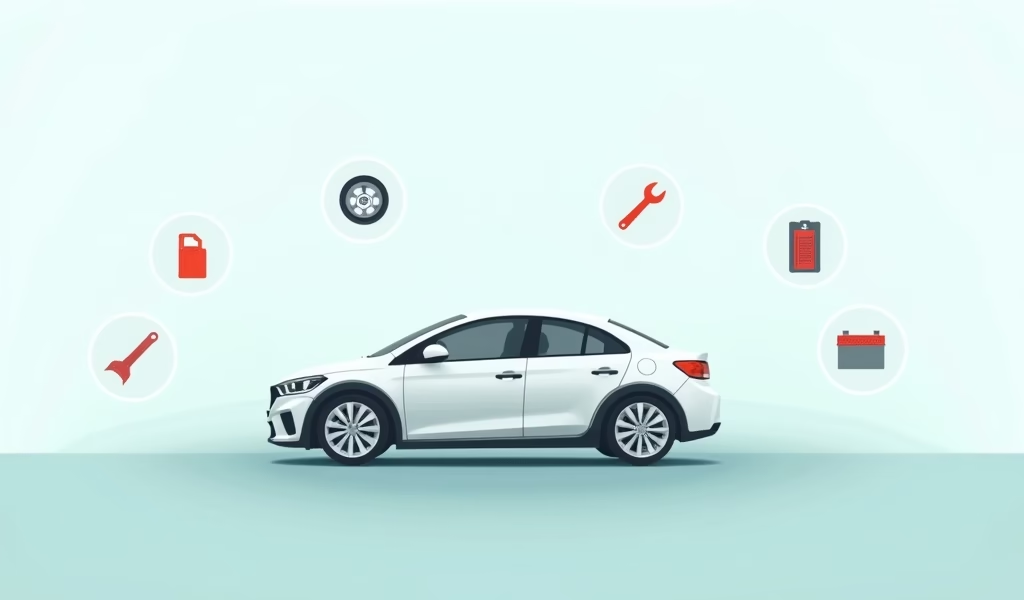Overview
This article outlines seven essential car maintenance practices that should be considered during the buying process and throughout ownership, including regular oil changes, tire care, brake maintenance, battery checks, fluid monitoring, air filter replacement, and following manufacturer maintenance schedules. Proper vehicle maintenance not only prevents breakdowns and expensive repairs but also extends a vehicle’s lifespan, improves performance, maintains resale value, and ultimately saves money in the long run.
Table of Contents
- Introduction
- Before You Buy: Research and Inspection
- Essential Maintenance Tip #1: Regular Oil Changes
- Essential Maintenance Tip #2: Tire Care and Rotation
- Essential Maintenance Tip #3: Brake System Maintenance
- Essential Maintenance Tip #4: Battery Care
- Essential Maintenance Tip #5: Fluid Level Checks
- Essential Maintenance Tip #6: Air Filter Replacement
- Essential Maintenance Tip #7: Following the Maintenance Schedule
- Conclusion
- Frequently Asked Questions
Introduction
Buying a car is one of the biggest financial decisions most people make. Whether you’re a first-timer stepping into the world of car ownership or you’re looking to upgrade your current vehicle, understanding proper maintenance before signing that purchase agreement can save you thousands in the long run.
Walking you through the process of buying a car requires more than just focusing on the sticker price or monthly payments. As a mechanic with over 15 years of experience, I’ve seen countless customers who skipped the maintenance conversation during purchase only to end up with expensive repairs just months later.
At Knows Your Car, we believe vehicle maintenance starts before you drive off the lot. Those who prioritize understanding maintenance needs during the process of buying a car typically enjoy a much smoother ownership experience. Proper maintenance doesn’t just prevent breakdowns—it can add years to your vehicle’s life and preserve its resale value.
Before You Buy: Research and Inspection
Smart car buying starts with thorough research. Before falling in love with that shiny vehicle on the showroom floor, investigate its reliability ratings. Check trusted sources like Consumer Reports and owner forums to uncover common issues and typical maintenance costs for specific makes and models.
When examining a used vehicle, be on high alert for these maintenance red flags:
- Uneven tire wear (suggesting alignment or suspension problems)
- Fresh-looking fluids that might be hiding leaks
- Inconsistent paint that could indicate previous accident damage
- Warning lights or unusual engine sounds during test drives
The single best investment before purchasing a used car is a pre-purchase inspection. For about $150, a qualified mechanic can identify hidden problems that could cost you thousands down the road. I’ve personally saved customers from buying vehicles with hidden transmission damage and failed head gaskets that weren’t obvious during a test drive.
First-time buyers should be particularly cautious. Our guide to first-time car buyers offers additional tips specific to those new to the car buying process.

Essential Maintenance Tip #1: Regular Oil Changes
Oil is the lifeblood of your engine. It lubricates moving parts, reduces friction, carries away heat, and helps clean the engine from the inside. Skipping oil changes is like never changing your workout clothes—things get gunked up, start to smell, and eventually break down.
For conventional oil, change every 3,000-5,000 miles. Synthetic oil generally extends that interval to 7,500-10,000 miles. Your owner’s manual provides the specific recommendations based on your engine design and typical driving conditions.
Here’s what happens when you ignore regular oil changes:
- Engine components wear prematurely
- Sludge builds up, restricting oil flow
- Engine temperature increases, risking overheating
- Fuel efficiency decreases as the engine works harder
Watch for warning signs that your car needs an oil change sooner than scheduled: darkened oil on the dipstick, increased engine noise, illuminated oil pressure warning light, or declining fuel efficiency. These are all your car’s way of asking for fresh oil.
Essential Maintenance Tip #2: Tire Care and Rotation
Your tires are your only contact with the road, making them crucial for both safety and performance. Properly inflated tires can improve fuel efficiency by up to 3% while significantly extending tire life.
Buy a quality tire pressure gauge and check pressures monthly—visual inspection can’t detect underinflation until it’s severe. Remember that tire pressure naturally decreases about 1 PSI for every 10-degree drop in temperature, so seasonal checks are essential.
Rotate your tires every 5,000-8,000 miles to ensure even wear patterns. Front tires typically wear differently than rear tires due to steering and driving forces. A proper rotation schedule can double your tire life—that’s real savings considering a set of quality tires can cost $600-$1,200.
Monitor tread depth regularly. The penny test works well: insert a penny with Lincoln’s head downward into the tread. If you can see the top of Lincoln’s head, it’s time for new tires. Driving on worn tires dramatically increases stopping distance and hydroplaning risk during rain.
Essential Maintenance Tip #3: Brake System Maintenance
Your brake system is your vehicle’s most critical safety component. In my years at the shop, I’ve seen too many close calls from customers who ignored early warning signs of brake issues.
Pay attention to these indicators that your brakes need attention:
- Squealing, grinding, or scraping noises during braking
- Vibration or pulsation in the brake pedal
- Increased stopping distance or soft/spongy pedal feel
- Vehicle pulling to one side during braking
Have your brakes inspected at least annually or every 12,000 miles. Brake fluid absorbs moisture over time, which can compromise stopping power and damage internal components. Most manufacturers recommend replacing brake fluid every 2-3 years regardless of mileage.
Don’t wait until you hear metal-on-metal grinding before replacing brake pads. By that point, you’ve likely damaged the rotors as well, doubling your repair costs. Typical brake pad replacement costs $150-$300 per axle, while adding rotor replacement can push that to $350-$500 per axle.
Essential Maintenance Tip #4: Battery Care
Modern vehicles rely heavily on electrical systems, making battery health essential for reliable operation. The average car battery lasts 3-5 years, though extreme temperatures can significantly shorten this lifespan.
Watch for these signs of battery deterioration:
- Engine cranking slowly during startup
- Dimming headlights or interior lights
- Electronic systems functioning intermittently
- Battery warning light illumination on the dashboard
To extend your battery’s useful life:
- Keep terminals clean and free of corrosion (a mixture of baking soda and water works wonders)
- Ensure the battery is securely mounted to prevent vibration damage
- Use a trickle charger during extended periods of non-use
- Have the charging system tested annually to catch potential issues early
A quality battery costs $120-$200, but the inconvenience of being stranded with a dead battery often outweighs the monetary cost. Most auto parts stores will test your battery for free, so there’s no excuse for being caught off guard.

Essential Maintenance Tip #5: Fluid Level Checks
Your vehicle relies on several specialized fluids to function properly. Each serves a unique purpose in keeping components operating smoothly and at optimal temperatures.
The essential fluids to monitor include:
- Transmission fluid: Enables smooth gear shifts and prevents premature transmission wear
- Coolant/antifreeze: Regulates engine temperature and prevents freezing or overheating
- Power steering fluid: Provides hydraulic assistance for steering control
- Brake fluid: Transfers force from the brake pedal to the brake components
- Windshield washer fluid: Maintains visibility in adverse conditions
Most fluids can be checked using dipsticks or transparent reservoirs with minimum/maximum markings. Develop a monthly routine of checking all fluid levels when you fill up with fuel. This simple practice takes just minutes but can prevent catastrophic component failures.
Automatic transmission replacement can cost $3,000-$5,000, while radiator replacement from neglected coolant might run $500-$900. These expensive repairs are often preventable with regular fluid checks and maintenance.
Essential Maintenance Tip #6: Air Filter Replacement
Your vehicle uses two distinct air filtration systems—the engine air filter and the cabin air filter—each performing vital functions that affect performance and comfort.
The engine air filter prevents dust and debris from entering the engine. A clogged engine air filter can reduce fuel efficiency by up to 10% and diminish acceleration. Most manufacturers recommend replacement every 15,000-30,000 miles, though dusty environments may necessitate more frequent changes.
The cabin air filter, often overlooked, purifies the air entering your vehicle’s interior. It traps pollen, dust, and other airborne contaminants that can affect passenger comfort and health. Replacement is typically recommended every 15,000-25,000 miles or annually for those with respiratory sensitivities.
Air filters are among the easiest and most affordable maintenance items to replace yourself. Engine air filters typically cost $15-$30, while cabin air filters run $10-$25. Most can be replaced in under 10 minutes with basic tools or no tools at all. Check your owner’s manual for locations and procedures, or find a quick tutorial on YouTube.
Essential Maintenance Tip #7: Following the Maintenance Schedule
Your vehicle’s maintenance schedule is a personalized roadmap to longevity. Manufacturers develop these schedules based on extensive testing and engineering knowledge.
Your owner’s manual contains this valuable information, typically presented in two formats:
- Time/mileage intervals (e.g., “Every 30,000 miles or 24 months”)
- Maintenance operations categorized by severity of driving conditions
Many modern vehicles include maintenance reminder systems that alert you when service is due based on actual driving patterns and conditions. These systems monitor various parameters like engine revolutions, temperature cycles, and trip duration to determine when services are needed.
Create a maintenance calendar in your phone or computer to track upcoming service needs. This proactive approach prevents the common scenario of realizing you’ve gone thousands of miles beyond a recommended service interval.
Following the maintenance schedule is particularly important for components you can’t see or easily monitor, such as:
- Timing belts/chains (failure can cause catastrophic engine damage)
- Transmission services (fluid degradation occurs invisibly over time)
- Fuel filters (clogging happens gradually without obvious symptoms)
- Spark plugs (performance decreases subtly as they wear)
While following manufacturer recommendations may seem expensive in the moment, it’s far more cost-effective than addressing preventable failures. Timely maintenance is always cheaper than major repairs.
Implementing these car buying tips and maintenance practices will help ensure you get the most value from your vehicle investment.
Conclusion
Walking you through the process of buying a car is about more than just finding the right price or model—it’s about setting you up for successful, trouble-free ownership. A well-maintained vehicle rewards its owner with reliability, safety, and significant cost savings over time.
By following these seven essential maintenance tips, you’ll enjoy several benefits:
- Extended vehicle lifespan—potentially adding years of service
- Improved fuel efficiency and performance
- Higher resale value when it’s time to sell
- Reduced likelihood of roadside emergencies
- Lower lifetime ownership costs through prevention
Remember that preventive maintenance is an investment, not an expense. Each dollar spent on proper maintenance typically saves $3-5 in avoided repairs and extended vehicle life. That oil change might cost $50 now, but it prevents an engine rebuild that could run $3,500 later.
At Knows Your Car, we’re passionate about helping you maintain your vehicle properly from day one of ownership. The relationship with your car begins—not ends—with the purchase. By incorporating these maintenance practices into your ownership routine, you’ll maximize your investment and enjoy the peace of mind that comes with a reliable vehicle.
Frequently Asked Questions
What’s the first maintenance task I should do after buying a used car?
Change all fluids unless you have documentation proving recent service. This gives you a fresh starting point and eliminates any potential contaminants from the previous owner’s maintenance habits.
How often should I really change my oil?
Follow your owner’s manual, not old rules of thumb. Modern engines with synthetic oil often go 7,500-10,000 miles between changes, while older vehicles may need changes every 3,000-5,000 miles.
Is it worth paying extra for premium fuel?
Only use premium fuel if your vehicle manufacturer specifically requires it. Using higher octane fuel in an engine designed for regular provides no benefit and wastes money.
How do I know if my mechanic is charging me fairly?
Get written estimates from multiple shops and compare them against online repair cost estimators like RepairPal. A good mechanic will explain what they’re doing and why it’s necessary.
What’s the single most important maintenance item to never skip?
Timing belt replacement—when one fails, it often causes catastrophic engine damage requiring thousands in repairs. Check your owner’s manual for the recommended replacement interval, typically between 60,000-100,000 miles.

